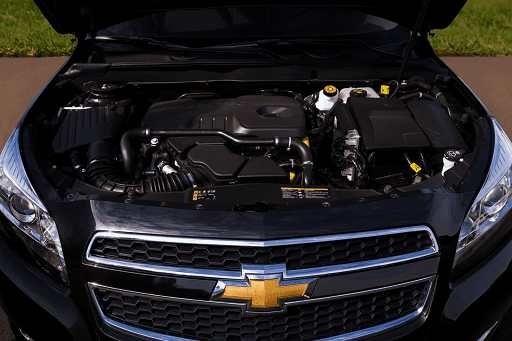Transmission Hot Idle Engine
In my journey through automotive maintenance, I’ve encountered the transmission hot idle engine issue more times than I care to count. It’s a problem that lies at the heart of your vehicle’s functionality, affecting its transmission—one of the most crucial components.
This machinery is the powerhouse that propels your car forward, but it’s not without its risks. Overheating is a frequent cause of failure, leading to severe consequences if not addressed promptly. The reason for this occurrence often traces back to long hours of stop-and-go driving, a hot engine working overtime without a break.

Simple acts like regular cleaning of the vehicle and avoiding unnecessary idling can significantly reduce the risk of overheating. This guide aims to highlight the main reasons your engine heats up and offers fixes that can be easily implemented.
Whether it’s modifying your driving habits or taking proactive maintenance steps, the goal is always to pinpoint and address the underlying cause.
What Is the Meaning of a Car Transmission?
Diving into the world of automotive intricacies, the car transmission stands out as a crucial component in ensuring that your vehicle moves smoothly. This marvel of engineering takes power from the engine and adeptly directs it to the wheels, allowing for seamless movement.
Whether it’s the various types of transmissions, like manual or automatic transmissions, each plays a pivotal role in how a car responds and performs under different conditions. This deep dive into transmissions reveals not just the mechanical heart of a car but also its soul, steering us through every journey with precision and reliability.
What Does the Transmission Hot Idle Engine Mean?
Encountering a transmission hot idle engine alert on your DIC (Driver Information Console) is more than just a message; it’s a critical signal that demands immediate attention. This alert indicates a potential problem with your car’s transmission, a scenario that might stem from insufficient cooling or an issue with the transmission fluid level.
Ignoring it could lead to more severe complications, making early diagnosis and action essential. Whether you’re dealing with high temperatures due to idle conditions or other underlying issues, understanding this alert means you’re ready to tackle transmission problems.
What Causes the Transmission Hot Idle Engine? What Are the Fixes?
As previously covered, the “transmission hot idle engine” message displayed on your Driver Information Center (DIC) indicates various issues with your car’s transmission. Below is a detailed analysis of the potential causes behind this alert’s occurrence.
Warm Weather Conditions
Warm Weather Conditions are one of the primary reasons behind the transmission hot idle engine issue. Operating a vehicle in a hot climate increases the risk, particularly when combined with stop-and-go driving, which puts additional strain on the transmission.
Being a rash driver who favors high speeds can further compromise the transmission’s working capability, leading to overheating. My experience in automotive repair has taught me that the key to preventing this problem lies in understanding the impact of environmental conditions on vehicle performance.
Adjusting driving habits to be more mindful of the transmission’s limitations in hot conditions can significantly mitigate the risk of overheating, ensuring your car remains in peak condition despite the challenges posed by warm weather.
Aggressive/Rash Driving
Aggressive/Rash Driving significantly contributes to the transmission hot idle engine problem, primarily through driving habits characterized by high speed and irregular brakes and pauses. Such behavior demands excessive power for moving the vehicle, leading to overheating.
The message from your car’s diagnostic system is clear: slow down and adopt reasonable speed. Reducing pressure on the clutch pedal and brakes not only mitigates this issue but also promotes calmness and smoothness in driving.
Through years of automotive experience, I’ve learned that mindful driving not only preserves the transmission but also enhances overall vehicle longevity and performance. Adjusting your driving style to be less harsh on the vehicle’s transmission can significantly decrease the risk of overheating, ensuring a smoother and safer ride.
Steep Roads
Navigating Steep Roads often requires climbing with significant force, putting immense pressure on your vehicle’s transmission. Such conditions demand more from the transmission, increasing the risk of overheating. To combat this, installing a transmission cooler can be a game-changer, effectively dissipating heat and reducing temperature spikes.
Additionally, incorporating a fluid additive enhances the lubrication and cooling properties of the transmission fluid, further safeguarding the transmission during demanding climbs.
By addressing the unique challenges posed by steep roads, you can significantly improve your vehicle’s performance and longevity, ensuring a smoother and more reliable ride.
Overweight Loads
Carrying Overweight Loads places undue exertion on a vehicle’s transmission, pushing it beyond its intended towing capacity and risking overheating. To mitigate this, it’s crucial to understand the limits of your vehicle and seek professional help when necessary.
In my experience, ensuring that the load matches the vehicle’s specifications not only prevents transmission issues but also enhances safety and efficiency on the road. Properly managing the weight your vehicle carries is a key step in preserving the health of your transmission, ensuring it remains cool and functional even under stress.
This approach not only extends the life of your transmission but also maintains optimal performance, keeping you moving smoothly and reliably.
Low Transmission Fluid
Low Transmission Fluid is a critical concern that can significantly impact your vehicle’s performance, leading to the dreaded transmission hot idle engine scenario. Keeping an eye on the fluid level is essential, as a leak can deplete the lubrication and cooling properties required for smooth operation.
Utilizing caps designed to prevent leaks is a simple yet effective strategy to maintain the integrity of your transmission system. In my years of automotive expertise, I’ve learned that regular checks and maintenance of transmission fluid are pivotal in preventing overheating and ensuring the longevity of the vehicle’s transmission.
This proactive approach not only safeguards your transmission but also ensures your journey is uninterrupted by mechanical failures.
Overheating of the Engine
Overheating of the Engine is a critical issue that can directly impact the transmission, leading to a transmission-hot idle engine situation. This problem is often exacerbated by oil leaks, which can further degrade the engine’s ability to cool itself effectively.
If not addressed promptly, this overheating can cause the transmission—and potentially the engine itself—to fail. In my experience within the automotive field, ensuring that your engine is running coolly and efficiently is paramount to preventing transmission issues.
Regular maintenance to identify and fix oil leaks and monitoring your engine’s temperature can save you from the costly and inconvenient consequences of engine and transmission failure.
Transmission Temperature Sensor
The Transmission Temperature Sensor plays a pivotal role in monitoring the temperature of your vehicle’s transmission fluid, acting as an early warning system for overheating issues. These sensors are crucial for maintaining the health of your transmission, allowing you to address potential problems before they escalate.
In my experience working with vehicles, a faulty sensor can often be the root cause of a transmission hot idle engine alert. It’s vital to consult a professional if you suspect your sensor is not functioning correctly. Prompt diagnosis and repair can prevent significant damage to your transmission, ensuring your vehicle operates efficiently and reliably.
Regular checks of the transmission temperature sensor can save you from the inconvenience and expense of major repairs down the line.
Where To Find the Transmission In a Car?
In any vehicle, the transmission plays a crucial role, seamlessly transferring power from the engine to the wheels. Typically, it’s mounted on the body of the car, positioned front and center, just below or underneath the engine.
For those driving a back-wheel drive, you’ll find the transmission situated behind the engine, often concealed below the dashboard region. This strategic placement is essential for the efficient operation of your car, allowing for smooth gear shifts and optimal performance.
Understanding where the transmission is located not only aids in troubleshooting but also in performing routine maintenance, ensuring your car remains in top condition.
Also read: check emission system acura mdx
Different Types of Car Transmission
As highlighted before, car transmissions come in two primary forms: automatic and manual. Below, you will find an in-depth examination of both types of transmissions.
Manual Transmission
For enthusiasts who cherish complete vehicle control, the manual transmission is often the preferred choice. It demands the driver to engage directly with the car, using the clutch pedal and gear stick to navigate through gears manually.
Unlike its automatic counterpart, mastering the manual transmission requires considerable practice. Yet, this hands-on approach to driving is not without its rewards; it notably enhances fuel efficiency and offers a sense of accomplishment as you excel in synchronizing your movements with the mechanical rhythms of your vehicle.
Embracing manual controls transforms each journey into a more intimate interaction with your car, inviting a deeper appreciation for motion mechanics.
Automatic Transmission
The automatic transmission revolutionizes driving by integrating automatic controls and functions that adjust shifting gears seamlessly. This system relies on advanced sensors to monitor the car’s speed and the engine’s RPM, optimizing performance without requiring manual input from the driver.
This technology not only simplifies the driving experience but also ensures that the vehicle operates at peak efficiency. In my journey through the automotive industry, I’ve observed how automatic transmissions have evolved to provide smoother transitions and enhanced fuel economy.
The convenience of not manually changing gears allows drivers to focus more on the road and less on the mechanics of the vehicle, making it an ideal choice for those who prioritize comfort and ease in their driving experience.
Working On the Car Transmission
The car transmission, whether manual or automatic, is fundamental in controlling a vehicle’s speed and acceleration.
Its primary function is to adjust the gear ratio between the engine and the drive wheels, enabling the car to accelerate or slow down as needed. In manual transmission, the driver uses the clutch pedal and gear lever to select and move gears, manually disconnecting the engine from the transmission to change gears.
Conversely, an automatic transmission handles these changes automatically, using sensors to determine when to shift gears based on the vehicle’s speed and the engine’s RPM. This system plays a crucial role in ensuring the engine operates smoothly, reducing power loss, and maintaining consistent speed.
When stopped, the transmission breaks the connection between the engine and the wheels, allowing the engine to idle without moving the car. This is vital for both the life and usage of the vehicle, highlighting the difference in how manual and automatic transmissions manage the causes and fixes for an overheated transmission hot idle engine, ultimately enhancing acceleration from a pause and minimizing energy loss.
Also Read: check emission system acura mdx

FAQs
Can Transmission Get Hot From Idling?
Yes, a transmission can get hot from idling, especially if it’s for extended periods under certain conditions, such as high outdoor temperatures, or if there’s an existing issue with the transmission cooling system.
Is It Safe To Drive With a Hot Transmission?
Driving with a hot transmission is not safe. It can lead to fluid breakdown, increased friction, and potential transmission failure. Pull over, let it cool down, and address the underlying issue before continuing to ensure safety and prevent further damage.
When facing issues like “Service ESC on Chevy Malibu” or “Why is my Check Engine and Trac Off light on,” it’s essential to consider potential underlying causes such as a “Transmission Hot Idle Engine.” Understanding these problems can help diagnose and address issues effectively, ensuring your vehicle’s optimal performance and safety.
Final Word
In conclusion, the “transmission hot idle engine” warning is a serious issue that can harm your car’s transmission and lead to bigger problems if ignored. Key causes include hot weather, hard-driving, steep inclines, heavy loads, low fluid, engine overheating, and bad sensors. To avoid trouble, cool your transmission, keep up with maintenance, and drive carefully. Cooling your car before continuing is vital for safety and preventing more damage. Fixing the problem quickly is crucial for keeping your car reliable and safe to drive.





